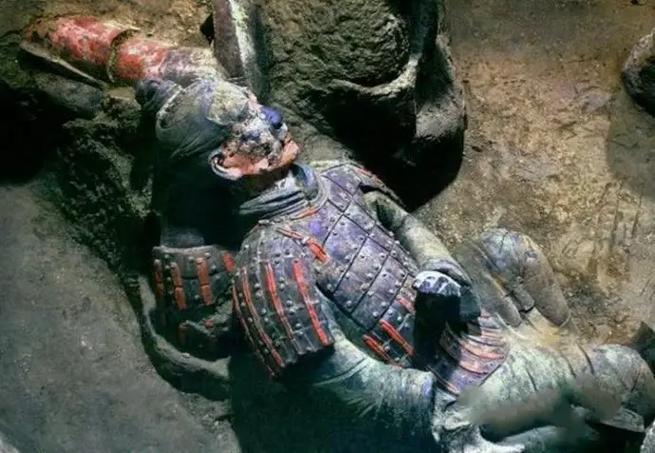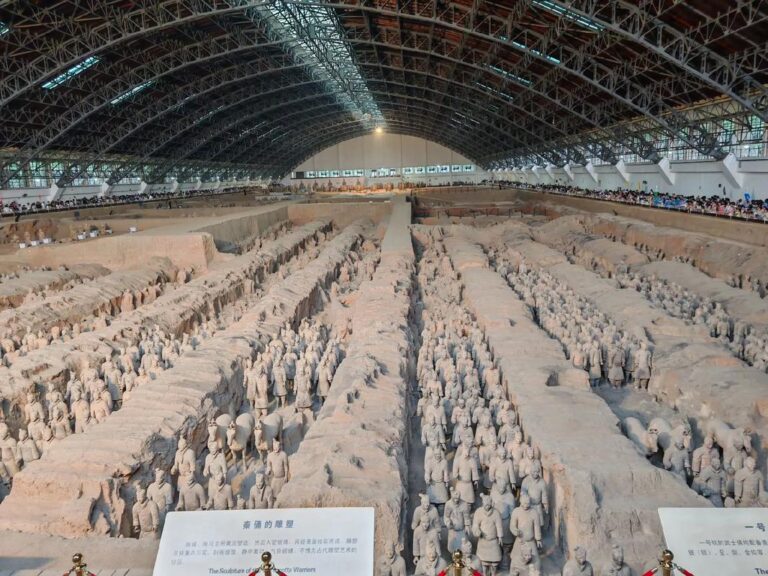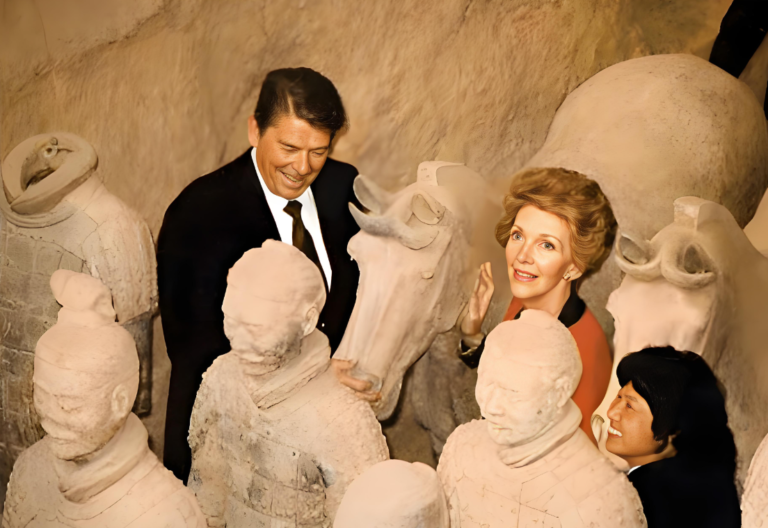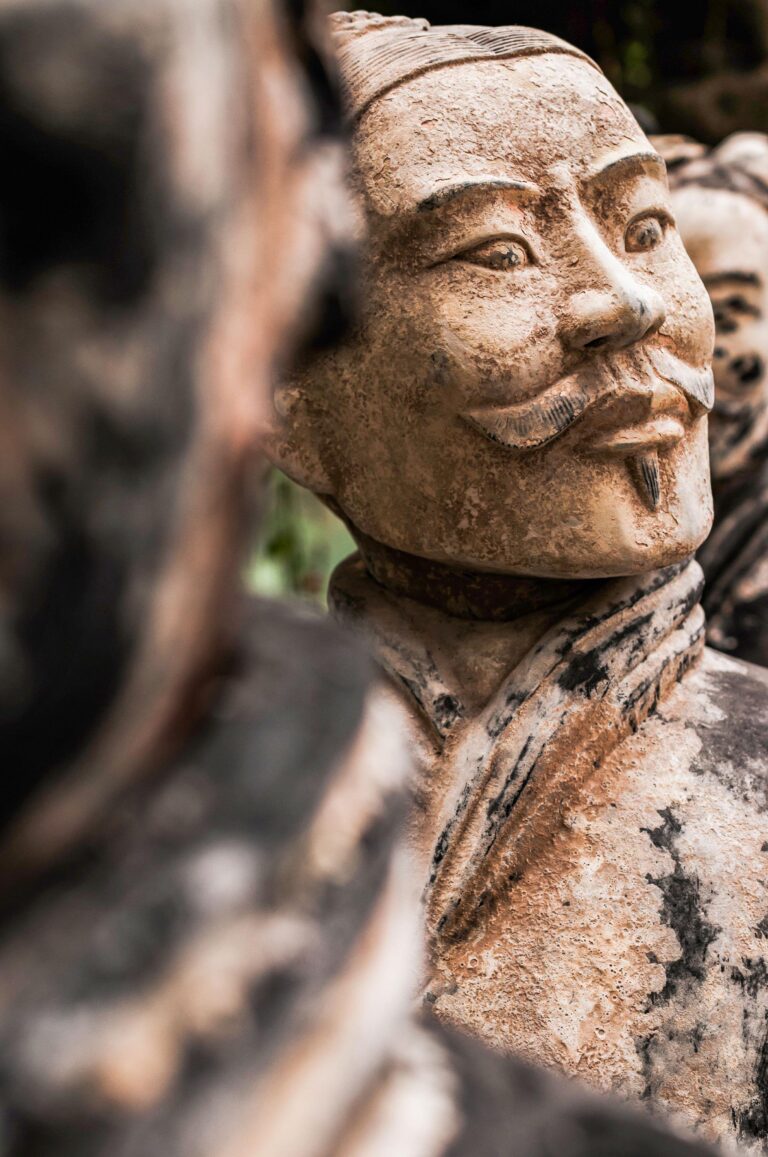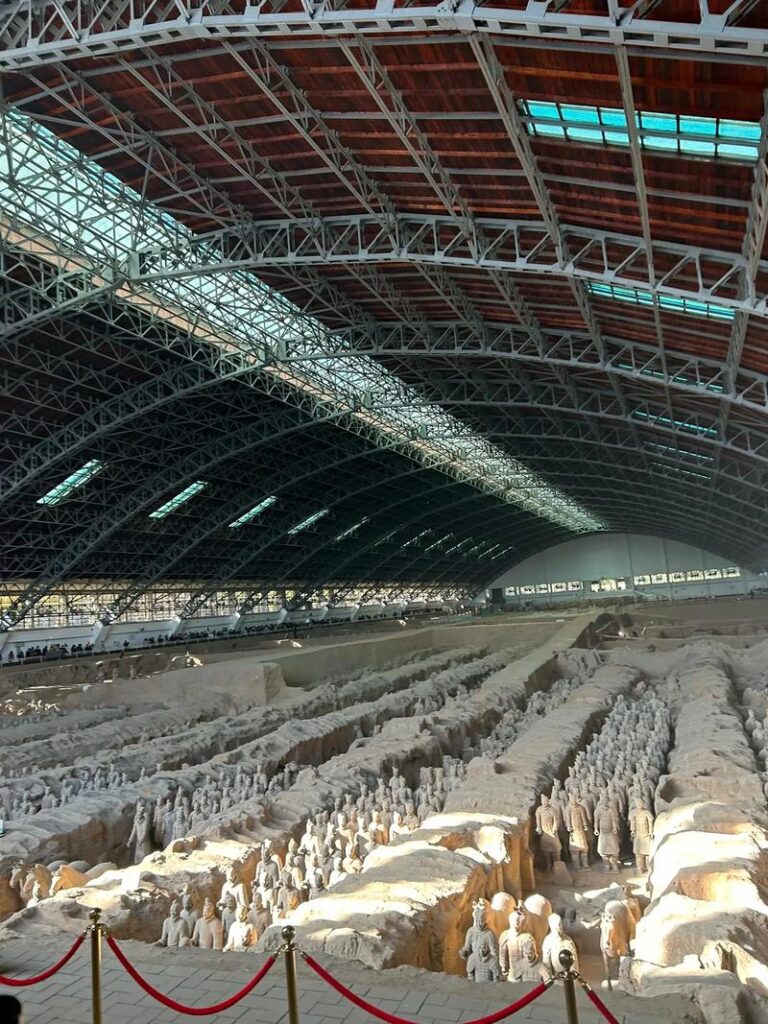What is the average size of the roughly 8000 soldiers of the Terracotta Army?
The Mystery of the Terracotta Warriors‘ Height: Why Were the Elite Soldiers of the Qin Dynasty Taller Than Modern People?
In 1974, several farmers in Shaanxi Province unearthed broken pottery shards while digging a well. Little did they know that this discovery would lead to the uncovering of over 8,000 life-sized terracotta soldiers from the Qin Dynasty—the Terracotta Army. These warriors, who have stood underground for 2,200 years, reveal a surprising fact through their physical measurements: the average height of this “underworld army” reaches 178.5 centimeters, nearly 9 centimeters taller than the average height of Chinese men today, which is 169.7 centimeters!
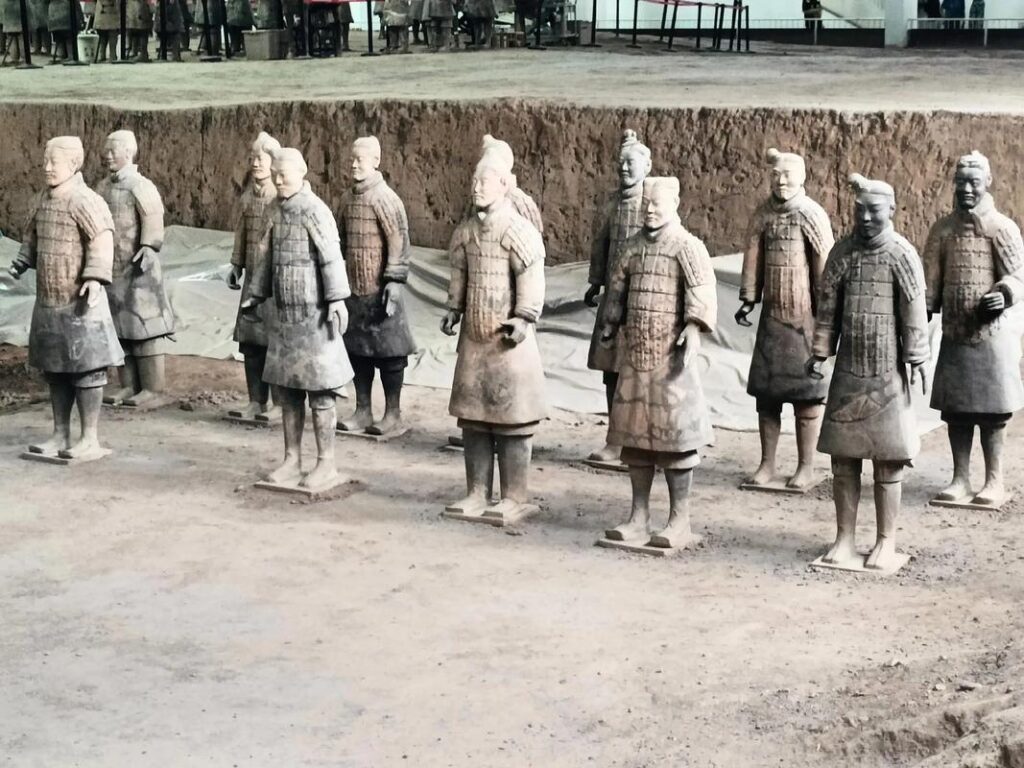
When visitors enter the Terracotta Army Pit 1 exhibition hall, they are greeted by an array of terracotta warriors with an average height exceeding 1.8 meters. Archaeological reports clearly record that the tallest figure measures 187.25 centimeters, while the shortest is 166 centimeters, with 75% of the terracotta warriors falling within the height range of 175 to 183 centimeters. However, please note—these figures include the thickness of the terracotta warriors’ bases (approximately 10 centimeters). If only the height of the human body is counted, the actual height range of the terracotta warriors is 170.5–181.5 centimeters, with an average of approximately 178.5 centimeters. These terracotta warriors were made in a 1:1 scale based on the height of Qin army soldiers, resembling a elite force petrified in stone.
I. The Height Code of the Elite Army
Do such tall soldiers represent the average height of people in the Qin Dynasty? The answer is no. The terracotta warriors are not “specimens of ordinary soldiers” but rather the imperial guard of Emperor Qin Shi Huang. Pit 1, as the core of the military formation, gathered the most elite forces of the Qin army. As per the tactical principle of “facing the enemy head-on” in Sun Tzu’s Art of War, these soldiers were the main force for direct confrontation with the enemy.
Ancient selection criteria for elite troops had strict height standards:
During the Song Dynasty, the imperial guard used “soldier models” (live human models) and “life-sized rods” (wooden rulers) during recruitment, and those who did not meet the height requirements were immediately eliminated.
Qin law stipulated that men must be at least six feet five inches (approximately 154 centimeters) tall to serve in the military, but the actual selection standards were far higher than this.
Qin bamboo slips record that cavalrymen must be over 180 centimeters tall, warhorses must have a shoulder height exceeding 175 centimeters, and ordinary infantrymen must not be shorter than 175 centimeters.
This resembles modern special forces selection criteria—the average height of Chinese men today is 169.7 centimeters, while special forces often require a minimum height of 175 centimeters. The Terracotta Army embodies the “special forces standards” of the Qin army.
II. The True Height Landscape of the Qin Dynasty
To find evidence of the average height of ordinary people in the Qin Dynasty, the Shuihudi Qin Bamboo Slips unearthed in Hunan provide clues. The “Fengzhen Shi” chapter records, “A young man named Xiao, 6 feet 5 inches tall”—the character “Xiao” indicates that 6 feet 5 inches (approximately 154 centimeters) was the height threshold for minors. Based on this, the height of adult men in the Qin Dynasty should have been between 160 and 170 centimeters.
Historical records provide more concrete height data:
– During the Han Dynasty, “seven-foot men” (approximately 161 centimeters) were considered the standard height for adult men.
– The “Hou Hanshu” records that Feng Qin’s grandfather felt inferior because he was “less than seven feet tall” and was classified as short.
– The 46 “eight-foot giants” (such as Xiang Yu and Zhuge Liang, both 1.84 meters tall) specifically recorded by historians were considered “towering giants” at the time.
More direct evidence comes from archaeologists’ measurements of ancient tomb remains:
– The average height of Neolithic Central Plains inhabitants was approximately 166 centimeters.
– The average height of males in tombs from the Eastern Zhou to the Qin periods was 167.9 centimeters.
– The average height of males in the Tang Dynasty tombs in Zhengzhou was 167.03 centimeters
These figures are only about 2 centimeters shorter than the 169.7 centimeters reported in the 2020 “China National Nutrition Report.”
III. A Scientific Perspective on Ancient and Modern Heights
Why could the height of Qin soldiers rival that of modern people? The key lies in selection mechanisms and regional characteristics:
Soldiers in the age of cold weapons were akin to modern athletes, where physical stature determined combat effectiveness
– The Qin state’s primary military conscripts came from the **Guanzhong region** (present-day Shaanxi), which remains one of China’s regions with the highest average height to this day
– Modern northern Chinese men are on average 3–6 centimeters taller than their southern counterparts, consistent with the regional height differences observed during the Qin dynasty
The misinterpreted theory that “ancient people were taller” often overlooks three key points:
1. Survivor bias: Historical records only document extraordinary individuals, much like today’s focus on NBA players’ heights
2. Measurement errors: The length of an ancient “chi” varied from 23 centimeters (Warring States period) to 24.2 centimeters (Three Kingdoms period)
3. Nutritional progress: Between 1985 and 2020, the average height of Chinese men increased by 4 centimeters, confirming the impact of improved nutrition on height.
IV. The Eternal Lessons of the Terracotta Army
When visitors stand before the Terracotta Army pits and gaze up at these towering warriors, they are essentially witnessing the precise selection criteria of the Qin Empire’s military machine. Just as modern national guard members must meet specific height requirements, Qin Shi Huang used clay to replicate the most formidable “human specimens” of the Qin Empire.
The ultimate message conveyed by these clay figures is not that “ancient people were taller than modern people,” but rather the advanced systematization of ancient China’s military organization—through unified height standards, military classification, and weaponry, a highly standardized war machine was forged. It was this rigorous selection and training system that enabled the Qin state to “carry human heads in one hand and captives in the other,” ultimately unifying the entire realm.
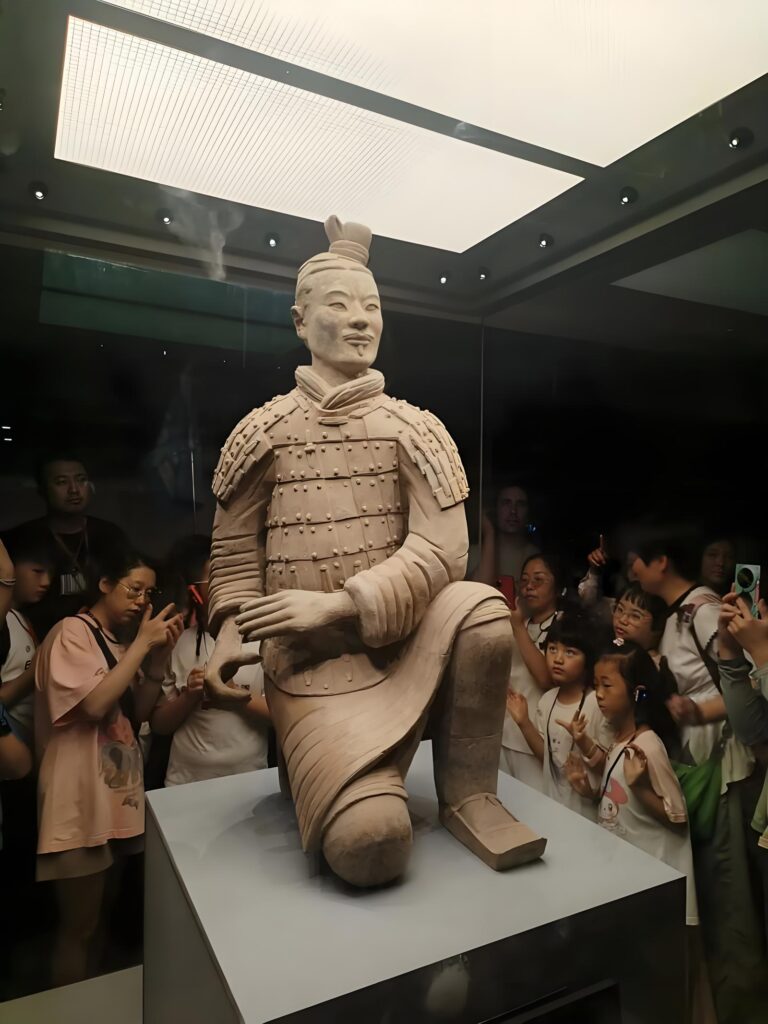
The height data of the 8,000 terracotta warriors serves as a temporal ruler, one end pointing to the stringent standards of ancient military selection, the other measuring the truth of modern human physical development. When American audiences stand before the terracotta warriors next time, they might take a closer look at the bases under the feet of the clay figures—these are not only physical supports but also historical metaphors: the heights of ancient elite soldiers were placed on special bases, while the actual heights of ordinary Qin people were only about 2 centimeters shorter than modern humans.
This two-millennium-spanning height comparison experiment reveals the ultimate truth: the combined forces of improved nutrition and genetic recombination have enabled the average modern person’s height to match the standards of ancient elite soldiers. Those once-revered Qin warriors now blend into our subway crowds and campus corridors—the progress of humanity is quietly inscribed in the subtle increases in height across each generation.


